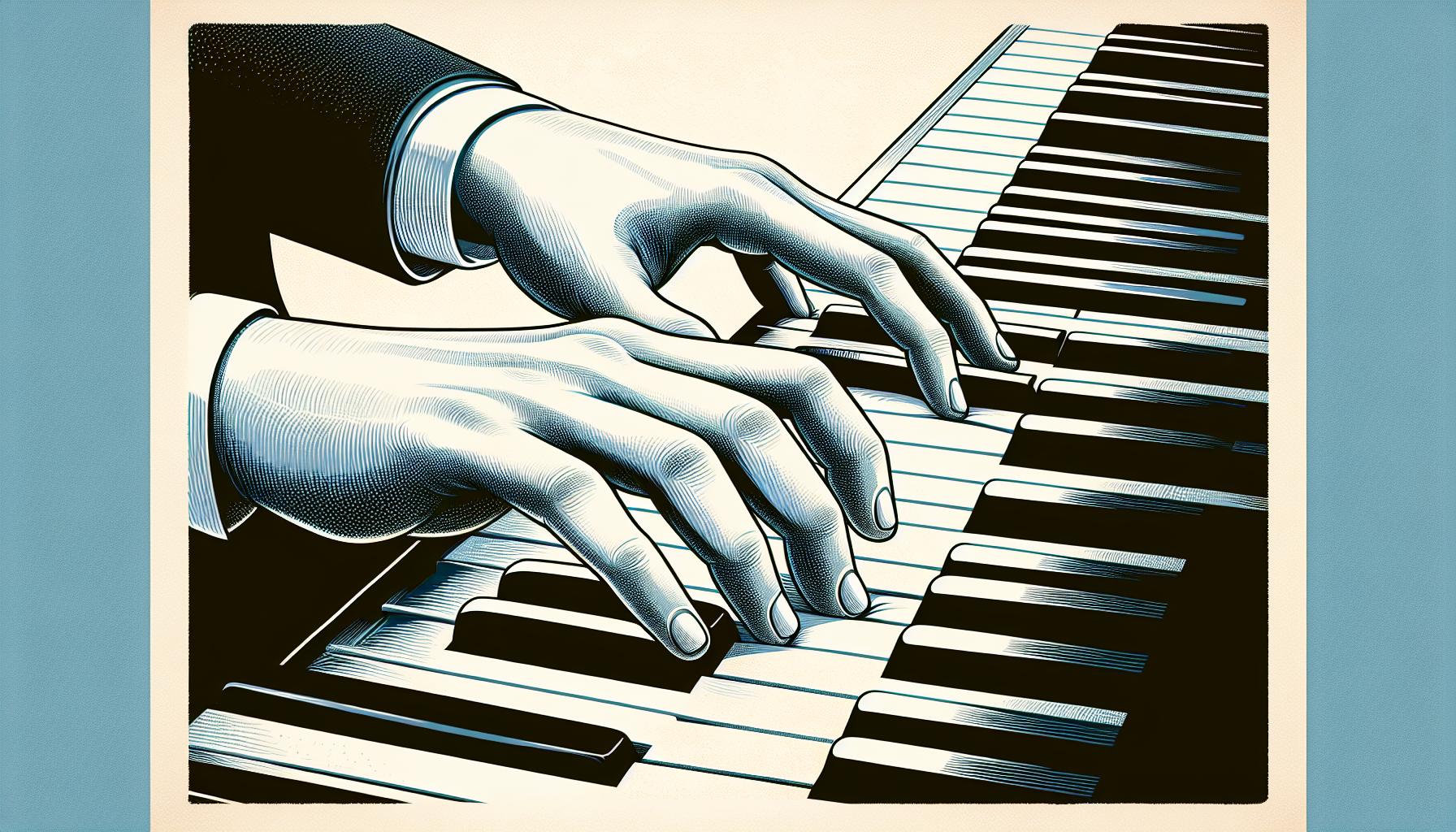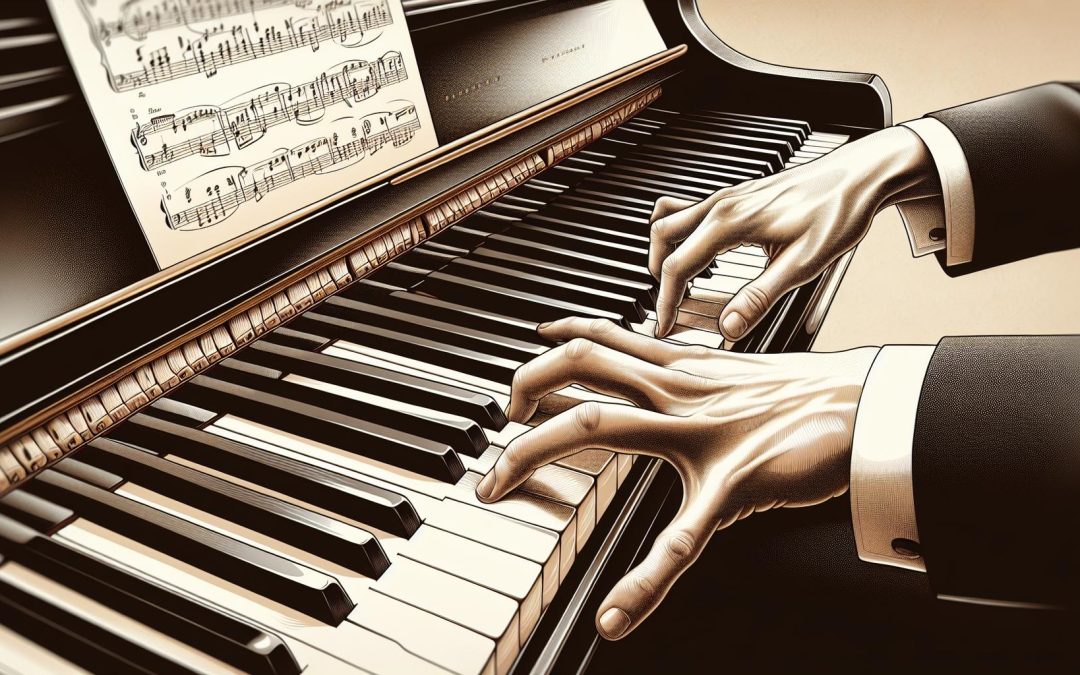Diving into the world of classical keyboard music can feel like stepping into a maze with its complex notations and symbols. But don't let that intimidate you! Understanding classical keyboard notation is like learning a new language, one that opens up a universe of musical expression and creativity.
Imagine sitting at the piano, sheets of music in front of you, and being able to decipher the mysterious symbols as easily as reading your favorite book. It's not just about hitting the right notes; it's about bringing the composer's vision to life. With a bit of guidance and practice, anyone can master this art. Let's embark on this musical journey together, unlocking the secrets of classical keyboard notation step by step.
Overview of Classical Keyboard Notation
Classical keyboard notation is a system of symbols and markings that acts as a map, guiding musicians through the landscape of compositions spanning centuries. At its core, this notation comprises staffs, clefs, notes, rhythms, and dynamics, each element playing a pivotal role in conveying the composer's intentions. For anyone new to classical music, this system might look complex, but it's designed with precision to make interpreting pieces as clear as possible.
Staffs and clefs lay the foundation of classical keyboard notation. A staff consists of five lines and four spaces where notes are placed, and its counterpart, the clef, indicates the pitch of notes on the staff. For keyboard players, the treble clef represents higher pitches played with the right hand, while the bass clef marks lower pitches for the left hand. Understanding this dual system is crucial for keyboard musicians, since much of classical music involves simultaneous reading of both clefs.
When it comes to notes and rhythms, the variety and combinations can seem endless. Notes signify not just the pitch but also the duration a sound should be held. Rhythms, created through a sequence of notes and rests, bring the melody and harmony to life. They're the heartbeat of a piece, dictating its pace and energy. Notations such as quarter notes, half notes, and whole notes dominate the scores, each representing different time values. Recognizing these symbols and interpreting their rhythmic patterns is key to mastering classical keyboard pieces.
Dynamics and articulations add color and emotion to the music. Dynamics, indicated by symbols like piano (p) for soft and forte (f) for loud, instruct players on the intensity of a note or passage. Articulations, including staccatos (short and detached) and legatos (smooth and connected), further refine how a note should be played to express a certain mood or character. These markings are essential for bringing depth and feeling to the performance, allowing musicians to connect more deeply with the music and, ultimately, with their audience.
Understanding Key Signatures

Key signatures are an essential aspect of classical keyboard notation, acting as a map that guides musicians through the tonal landscape of a piece. At the beginning of each staff, right after the clef, the composer places a series of sharp (#) or flat (b) symbols which indicate the key of the music. This system allows the performer to know which notes will be consistently altered throughout the piece without having to notate every single alteration next to the notes themselves.
For keyboard players, understanding key signatures is crucial because it affects how they approach the keys and interpret the music. A piece in C Major, with no sharps or flats, will have a different tonal quality compared to a piece in E Major, which contains four sharps. Similarly, a piece in F Major, with one flat, offers a distinctive mood that differs from that of B Flat Major, which has two flats. The key signature directly influences the overall color and emotional expression of the piece.
| Key | Sharps or Flats |
|---|---|
| C Major | None |
| E Major | 4 Sharps |
| F Major | 1 Flat |
| B Flat Major | 2 Flats |
Musicians often rely on mnemonic devices to remember the order of sharps and flats in key signatures. For sharps, the phrase "Father Charles Goes Down And Ends Battle" helps recall that the order is F#, C#, G#, D#, A#, E#, and B#. Conversely, for flats, the phrase "Battle Ends And Down Goes Charles' Father" serves to remember that the order is Bb, Eb, Ab, Db, Gb, Cb, and Fb. These aids are not just memory tricks but tools that significantly enhance a musician's ability to quickly adapt to different keys.
Interpreting Time Signatures

In the realm of classical keyboard notation, time signatures play a pivotal role, acting as a conductor that guides the rhythm and pace of a piece. Positioned right after the key signature at the beginning of a music staff, time signatures are composed of two numbers stacked one on top of the other. Understanding these notational symbols is essential for keyboard players as it directly influences their performance tempo and rhythmic precision.
The top number in a time signature indicates how many beats are contained in each measure, whereas the bottom number reveals what note value is assigned to each beat. This system allows musicians to grasp the piece's rhythmic structure quickly.
For example, a 4/4 time signature, often referred to as "common time," signifies that there are four beats in each measure and the quarter note receives one beat. This time signature is prevalent in many classical compositions due to its straightforward nature and balance. On the other hand, a 3/4 time signature creates a waltz rhythm, with each measure holding three beats and the quarter note still representing one beat.
Keyboard players must be adept at interpreting various time signatures to accurately convey the composer’s intended rhythmic flow. Here are a few key points:
- Beat Groupings: Understanding how beats are grouped within a measure is crucial. In a 6/8 time signature, for example, beats are typically divided into two groups of three eighth notes, creating a lilting rhythm characteristic of many dances and marches.
- Changes in Time Signature: It’s not uncommon for classical compositions to feature changes in time signature throughout the piece. These changes require the performer to adapt quickly to maintain the piece's rhythmic integrity.
- Dotted Rhythms and Syncopation: Beyond simple time signatures, keyboard players often encounter dotted rhythms and syncopation, which challenge their rhythmic precision and interpretative skills. Mastery over these complex rhythms enhances a musician's ability to perform a wide range of classical repertoires with proper emotional expression.
- Slow Practice: Beginning with a slow tempo allows for a deeper understanding of the rhythmic structure and aids in internalizing the beat.
- Metronome Use: Practicing with a metronome helps in maintaining a consistent tempo and understanding the division of beats within a measure.
- Counting Aloud: Vocalizing the count can reinforce the mental processing of rhythmic patterns and ensure
Exploring Musical Expressions and Dynamics

Beyond the notes and rhythms scored on a piece of music, classical keyboard notation is rich with instructions for the performer on how to infuse the composition with emotion and dynamics. These markings, often in Italian, guide musicians through the intended loudness or softness and the emotional expression of a piece. Understanding these expressions and dynamic markings is essential for delivering a performance that's both technically accurate and emotionally resonant.
Musical expressions cover a wide range of instructions. From legato (smoothly) to staccato (short and detached), these indications help define the character of a piece. Another common marking, crescendo, signals a gradual increase in volume, adding to the intensity of the music. Similarly, a decrescendo or diminuendo instructs the player to gradually decrease the volume, often leading to moments of calm or introspection.
Dynamics are notated from ppp (pianississimo, or very very soft) to fff (fortississimo, or very very loud), with several gradations in between. Understanding these dynamics and how they interact with the tempo and rhythm of a piece can profoundly affect its overall mood and impact. For example, a sudden shift from piano (p) to forte (f) can be startling and is often used to convey a change in emotion or to highlight a particular section of the music.
Incorporating these elements into one's playing involves a mix of technical skill and emotional sensitivity. Keyboard players must develop a keen sense of touch to execute these dynamics effectively, which can take years of practice. They also need to cultivate an emotional connection to the music, allowing them to interpret the composer's intentions and bring the piece to life in a way that resonates with the audience.
One practical way to enhance understanding and execution of musical expressions and dynamics is through active listening. By studying recordings of esteemed musicians performing the same piece, keyboard players can gain insight into various interpretive choices. Noticing how different artists handle the transitions between dynamics or how they apply expressions to convey emotion can be incredibly educational.
Additionally, experimenting with the weight and speed of key strikes during practice can help musicians find the right touch for each dynamic marking. Coupled with regular feedback from instructors and peers, this exploration can lead to a deeper understanding and more nuanced performances.
Practice Tips for Mastering Classical Keyboard Notation

Mastering classical keyboard notation is akin to learning a new language. It requires patience, persistence, and a lot of practice. Here are some invaluable tips to help musicians of all levels interpret, understand, and execute classical compositions with ease and accuracy.
Start with The Basics
Before diving into complex compositions, it's crucial to have a solid understanding of the basics of classical notation. This includes recognizing the different types of notes and rests, being familiar with the staff, and understanding clefs and key signatures. Musicians should practice reading and playing simple pieces to reinforce their knowledge of these fundamental elements.
Break It Down
When faced with a challenging piece, breaking it into smaller, manageable sections can be highly effective. Focus on one measure or phrase at a time, mastering each before moving on to the next. This approach not only makes the learning process more manageable but also ensures thorough understanding and memorization.
Slow Practice
Slow practice is key. Playing a piece slowly allows musicians to pay close attention to every detail in the notation, from dynamics to articulations. This methodical approach helps in internalizing the nuances of the composition and builds a solid foundation for gradually increasing the speed without compromising accuracy or expression.
| Technique | Benefit |
|---|---|
| Slow Practice | Enhances accuracy and expression |
| Hands-Separate Practice | Improves coordination |
| Metronome Use | Ensures rhythmic consistency |
Use a Metronome
Rhythm plays a vital role in classical music. Using a metronome during practice can help musicians maintain a consistent pace and improve their sense of timing. Start by setting the metronome to a slow tempo that allows for accurate note execution, then gradually increase the speed as proficiency develops.
Hands-Separate Practice
Many classical pieces involve intricate hand coordination. Practicing each hand separately before trying both hands together can make it easier to focus on the specific challenges of each part. Once comfortable with each hand's part, slowly combine them, paying close attention to the interplay between the hands.
Understand the Historical Context
Understanding the historical background of a piece or composer can provide valuable insights into the intended emotion and character of the music. Researching the period in which a piece was written, along with the composer's stylistic tendencies, can inform interpretive decisions and deepen the musician's connection to the piece.
Conclusion
Mastering classical keyboard notation is a journey that unfolds with each note and every piece. It's about embracing the process, from the foundational principles to the intricate details that bring music to life. By breaking down pieces into manageable sections and practicing slowly, musicians can cultivate a deeper understanding and a more expressive performance. Remember, it's not just about hitting the right notes; it's about connecting with the music's soul, informed by its historical roots and your personal touch. So keep at it, let patience be your guide, and watch as the language of classical keyboard notation reveals its secrets to you, one beautiful melody at a time.
Harlan Kilstein began playing piano during covid with no piano background at all. He taught himself how to play learning what to do and what not to do.
Today he's an advanced intermediate player and can help you grow in your skills because he learned all this on his own.








